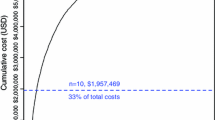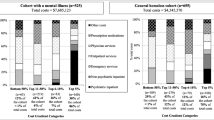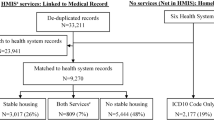Abstract
Limited research exists on the health of the homeless population, and often relies on large health care datasets and varied methods, with little work to understand how the choice of measurement, such as an address-based indicator versus diagnosis code, affects the estimates of demographics and comorbidity burden of this population. Using state-wide hospital discharge data, we identified homeless individuals three ways: via ICD-10 Z59.0, an administrative indicator, and those with both. From 2,427,549 discharges, 17,479 individuals were identified via only Z-code, 9183 via only the indicator, and 4578 had both. There were differences in the race, sex, payer, and admission type between the groups. Similarly, comorbidity profiles were different, with the differences reaching 11.4% for alcohol abuse. The difference in the size, composition, and comorbidities between these groups suggests that researchers, clinicians, and policy experts should be wary of current methods to identify homeless individuals and continue to improve capture of this determinant of health. Simply, if we are unable to accurately identify the group of interest and their potential health needs we are equally unable to effectively intervene and provide appropriate and relevant care.

Similar content being viewed by others
References
Beta Elixhauser Comorbidity Software for ICD-10-CM (2020). https://hcup-us.ahrq.gov/toolssoftware/comorbidityicd10/comorbidity_icd10.jsp
Elixhauser, A., Steiner, C., Harris, D.R., Coffey, R.N.: Comorbidity measures for use with administrative data. Med. Care. 36(1), 8–27 (1998). doi:Doi https://doi.org/10.1097/00005650-199801000-00004
Kushel, M.B., Vittinghoff, E., Haas, J.S.: Factors associated with the health care utilization of homeless persons. JAMA. 285(2), 200–206 (2001). doi:https://doi.org/10.1001/jama.285.2.200
Lagasse, J.: Social determinants of health data can be difficult to collect and share, but it’s imperative to success. https://www.healthcarefinancenews.com/news/social-determinants-health-data-can-be-difficult-collect-and-share-its-imperative-success (2019). Accessed 14 October 2019
Lam, C.N., Arora, S., Menchine, M.: Increased 30-day emergency department revisits among homeless patients with mental health conditions. West J. Emerg. Med. 17(5), 607–612 (2016). doi:https://doi.org/10.5811/westjem.2016.6.30690
Leon-Chisen, N.: ICD-10-CM coding for social determinants of health. American Hospital Association (2018). https://www.aha.org/system/files/2018-04/value-initiative-icd-10-code-social-determinants-of-health.pdf
National Health Care for the Homeless Council: Ask & Code: Documenting homelessness throughout the health care system. Washington, DC (2016). https://nhchc.org/ask-code-documenting-homelessness-throughout-the-health-care-system/
Orlowski, J.M.: Comments on proposal to expand ICD-10-CM codes for social determinants of health. Association of American Medical Colleges (2019). https://www.aamc.org/media/11751/download
Perkins, N.J., Cole, S.R., Harel, O., Tchetgen Tchetgen, E.J., Sun, B., Mitchell, E.M., Schisterman, E.F.: Principled approaches to missing data in epidemiologic studies. Am. J. Epidemiol. 187(3), 568–575 (2018). doi:https://doi.org/10.1093/aje/kwx348
Ray, K.: Tracking homelessness through the electronic health record system. Parternship for Strong Communities, 24 Jan 2018. https://www.pschousing.org/news/tracking-homelessness-connecticut-electronic-health-record-system
Rosendale, N., Guterman, E.L., Betjemann, J.P., Josephson, S.A., Douglas, V.C.: Hospital admission and readmission among homeless patients with neurologic disease. Neurology. 92(24), e2822–e2831 (2019). doi:https://doi.org/10.1212/WNL.0000000000007645
Savage, J., Braun, E.: Florida homelessness statistics. https://www.usich.gov/homelessness-statistics/fl/ (2018). Accessed 10 July 2019
Shivinsky, S., Mills, R.J.: UnitedHealthcare and the AMA collaborate to understand and address social barriers preventing people’s access to better health. In: BusinessWire, Minnetonka, Minnesota and Chicago (2019). https://www.bloomberg.com/press-releases/2019-04-02/unitedhealthcare-and-the-ama-collaborate-to-understand-and-address-social-barriers-preventing-people-s-access-to-better-health
Vickery, K.D., Shippee, N.D., Bodurtha, P., Guzman-Corrales, L.M., Reamer, E., Soderlund, D., Abel, S., Robertshaw, D., Gelberg, L.: Identifying homeless medicaid enrollees using enrollment addresses. Health Serv Res. 53(3), 1992–2004 (2018). doi:https://doi.org/10.1111/1475-6773.12738
Wadhera, R.K., Choi, E., Shen, C., Yeh, R.W., Maddox, J.: K.E.: Trends, causes, and outcomes of hospitalizations for homeless individuals: a retrospective cohort study. Med Care (2018). doi:https://doi.org/10.1097/MLR.0000000000001015
Zech, J., Husk, G., Moore, T., Kuperman, G.J., Shapiro, J.S.: Identifying homelessness using health information exchange data. J Am Med Inform Assoc. 22(3), 682–687 (2015). doi:https://doi.org/10.1093/jamia/ocu005
Acknowledgements
The author would like to acknowledge Dr. Siran Koroukian for her mentorship and feedback on this work, as well as Dr. Adam Perzynski for his thoughtful insights as these ideas were being developed.
Funding
This study had no direct funding support
Author information
Authors and Affiliations
Corresponding author
Ethics declarations
Conflict of interest
Wyatt Bensken declares that he has no conflicts of interest.
Human and animal rights
This article does not contain any studies with human participants or animals performed by any of the authors, as it was deemed exempt by the IRB.
Additional information
Publisher's Note
Springer Nature remains neutral with regard to jurisdictional claims in published maps and institutional affiliations.
Appendix 1:code
Appendix 1:code










Rights and permissions
About this article
Cite this article
Bensken, W.P. How do we define homelessness in large health care data? Identifying variation in composition and comorbidities . Health Serv Outcomes Res Method 21, 145–166 (2021). https://doi.org/10.1007/s10742-020-00225-5
Received:
Revised:
Accepted:
Published:
Issue Date:
DOI: https://doi.org/10.1007/s10742-020-00225-5




